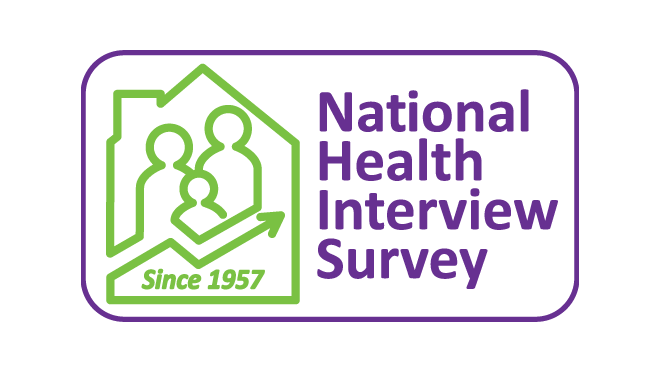What to know
- NHIS is the National Health Interview Survey.
- NHIS is a national survey that monitors the health of the U.S. population.
- NHIS statistics provide insights into the health of people of different ages, sexes, races and ethnicities, geographic locations, and social and economic circumstances.

Overview
The National Health Interview Survey (NHIS) monitors the health of people across the country—the U.S. population—by collecting and analyzing data on a broad range of health topics. NHIS focuses on the health of U.S. children and adults.
CDC's National Center for Health Statistics (NCHS) conducts NHIS. It is the nation's largest and oldest national health survey. NHIS began collecting data in 1957.
Each year, NHIS collects data from about 27,000 adults through confidential, face-to-face interviews throughout the year. Many of these adults also provide health information about children in their households.
NHIS collects data from civilians who don't live in institutions. Civilians are people not serving on active duty in the military. Institutionalized people live in places like correctional facilities, skilled-nursing homes, and mental (psychiatric) hospitals.
What's collected
NHIS collects data through personal interviews. One adult household member provides information about their own health and the health of others in their households.
NHIS collects data about health topics like—
- Illness and chronic conditions
- Injuries and chronic pain
- Health-related behaviors
- Ability to perform daily activities (functioning) and disability
- Healthcare access and use
- Health insurance coverage
- Preventive services to identify and prevent health problems
The U.S. Census Bureau employs and trains field staff to conduct these interviews. They follow procedures developed by NCHS experts. Field staff conduct most interviews in person. Sometimes they conduct follow-up interviews over the phone.
Data and documentation
NCHS publishes reports featuring expert analysis of NHIS data. Selected estimates also are available as part of our interactive data query systems that provide tables and charts.
In producing these resources, NHIS staff prioritize protecting participants' privacy.
Data files
NHIS public use data files are available to download in multiple formats. All potentially identifiable information has been removed to ensure the confidentiality of participants and their households.
NHIS restricted data files are available through the National Center for Health Statistics Research Data Center (RDC) for a fee. To access restricted NHIS data, researchers must submit requests in the Standard Application Process portal. The RDC provides instructions for preparing and submitting an application to access restricted data.
NHIS data also has been linked with data from other sources. This provides more robust datasets that can be used to analyze complex relationships between data from different sources. These linked datasets are available in the RDC.
Find data documentation for these datasets at Questionnaires, Datasets, and Documentation.
How the data are used
NCHS staff use NHIS data to produce official national health estimates. One of NHIS's key strengths is its ability to produce estimates for many subgroups of the U.S. population. NHIS can do this because it collects data from such a large group of people.
NHIS health statistics provide health information by—
- Demographic characteristics, like age and marital status
- Geographic location, like region and metro area size
- Social and economic circumstances, like employment status and poverty level
These data help researchers, policymakers, and other data users better understand how health differs among these groups.
NHIS data drive policies and programs to improve health. NHIS results have helped track the health status of Americans, their access to health care, and the nation's progress toward achieving health goals.
